
PROBLEM
College students' location variability, very high cognitive load, and high levels of interaction with single-use recyclables are a unique challenge for current recycling engagement tactics that rely on education and general prioritization of recycling.
SOLUTION
Provide students with a moment-of set of instructions on how to recycle their single-use items based on local practices and laws, removing the responsibility of recalling complex information from the end-user.
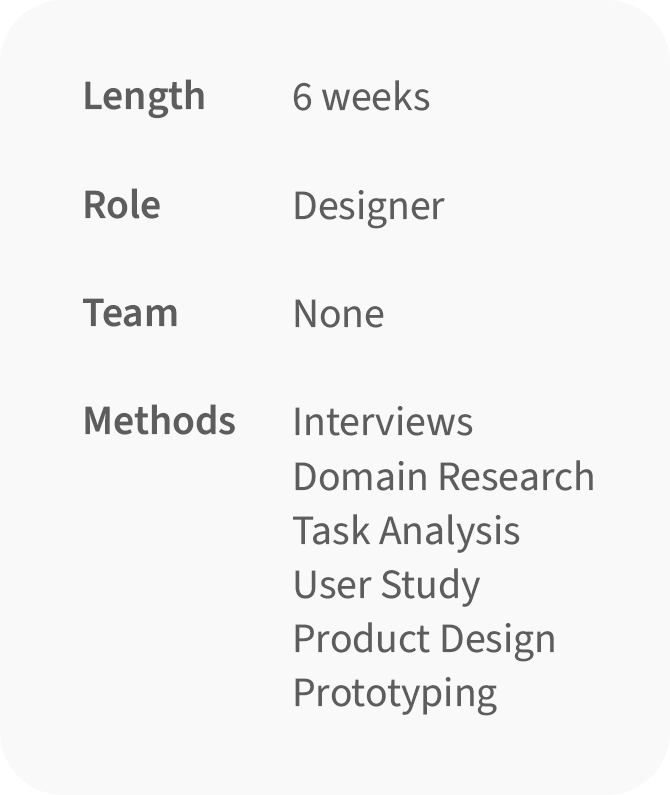
INTRICATE SOLUTIONS FOR INTRICATE PROBLEMS
A user-centric, comprehensive system designed to address varying user interest and abilities.
FINAL DESIGN
1. Systemic change
Instead of it being the consumer's responsibility to learn details about the materials, the responsibility should be on the producers of the single-use materials to make this information easily available. This would also involve requirements for businesses and organizations purchasing these plastic/styrofoam/cardboard products to receive this information and pass it onto the end user.

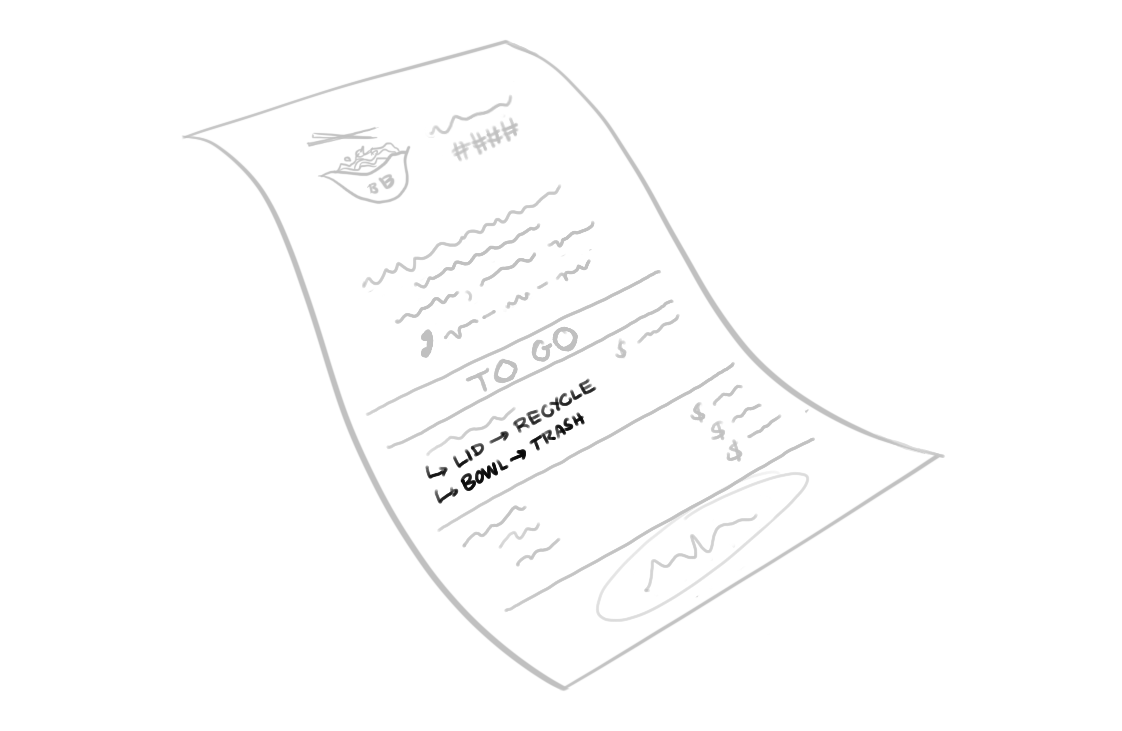
2. Using an existing, underused element of take-out: the receipt.
The intervention needs to fit into the user's current routine, as well as providing easy access to further details and involvement if the user is interested. With almost every takeout meal, there is a receipt attached to the bag. Adding recycling information to the meals on the receipt allows for a simple change for restaurants that gives users information about the recycling of packaging products for specific meals.
3. A website for engaging interested users.
For users who are open to more interaction, adding a QR code to the receipt (or a short link for less modern cash registers) can engage people with useful information about recycling processes in their area and how they can be more involved. Additionally, it can provide a more visual instruction set for their meal.

MAKING ECO-FRIENDLY CHOICES WHILE EXPERIENCING STRESS
BRIEF
While our long-term goal is to no longer produce or rely on non-renewables, their continued use still needs to be addressed in the meantime. College students around the United States are exposed to a large number of recycling systems- many interact with up to three per day. Since students are known to prioritize convenience and speed, as well as being from a diverse range of backgrounds and experiences, they provide a unique challenge that recycling education efforts could have difficulty addressing.
How can we reach a population overinundated with daily instruction and information?
What solutions are general enough to apply to a diverse population and have a measurable impact?
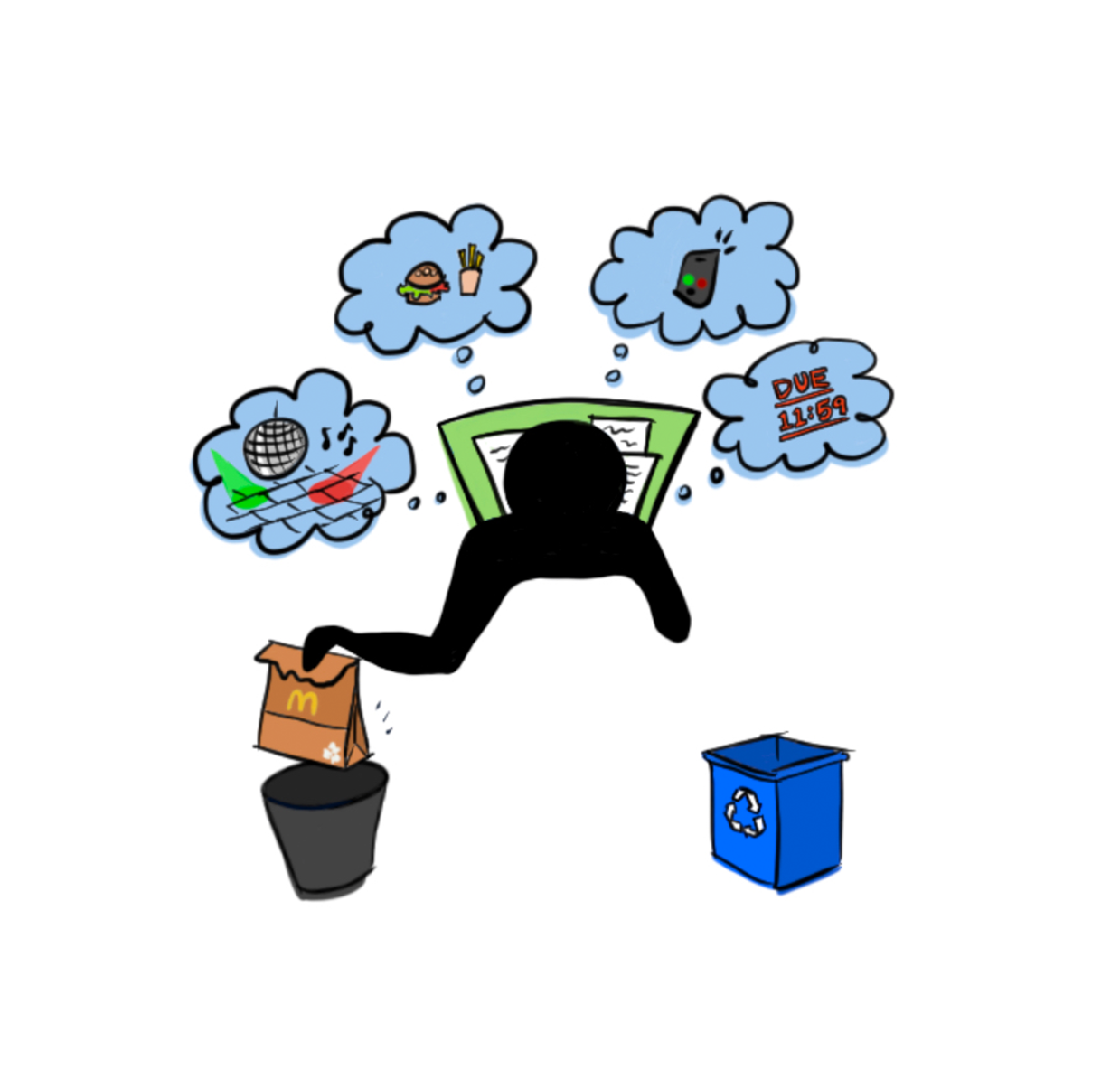
PRELIMINARY RESEARCH
EXISTING PARTICIPANTS, SOLUTIONS, AND ENGAGEMENT LEVELS
To begin, I conducted a literature review and competitive analysis of existing recycling practices and solutions that are currently implemented in Pittsburgh. Below are the insights I derived from each research topic.
1. Profiling of recycling participants in Pittsburgh
The user being relied upon for consistency (any individual) is incredibly variable, meaning solutions have to be as broad and shallow as possible.
3. Research on success rates of currently-utilized solutions
While the introduction of mixed curbside recycling enabled families and homes to recycle more, it also increased contamination of recyclables.
2. Research on existing solutions that have a goal of higher rates
of engagement with recycling systems
Many existing projects and solutions are education-based, which doesn't consider cognitive load & relies on individual motivation & interest.
4. Could current solutions be improved?
Decontamination of recyclables from food, toxins, etc. is expensive and can be dangerous for workers, meaning even viable materials in the same bag must be discarded.

WHO AM I DESIGNING FOR?
The next step was to narrow down the user base to scope, considering which users would be accessible to conduct observations and interviews with, and which demographic choices would lead to a most complicated/contradicting persona to design for. The adjacent data is from informal surveys of group members in the area. From this exercise, I created the below profile of the user I would be primarily designing for:
[USER PROFILE]
- College student
- Upperclassmen (able to speak to
experience gained and how) - Off-campus housing (interaction with most
systems) - converted house
TASK ANALYSIS AND HUMAN FACTORS PROBLEMS
The process I chose to analyze was the user engaging with the takeout food system. I wanted to acknowledge and explore the features available on ordering apps for eco-conscious decisions to see an example of their usage and/or effectiveness.
NOTE: from observation, on many orders, the "no utensils" add-on is ignored- possibly due to the mental load already placed on employees packing meals.
This task analysis confirmed that the most human factors issues (capacity for effort, knowledge gaps) occurred during the disposing of takeout materials. In the first two tasks in the process, there were only two main human factors problems that were encountered. The first task has the most potential to prevent waste from entering the stream, and the second also has the potential to extend the life of single-use materials to situations where the orderer doesn't have access to reusable materials.
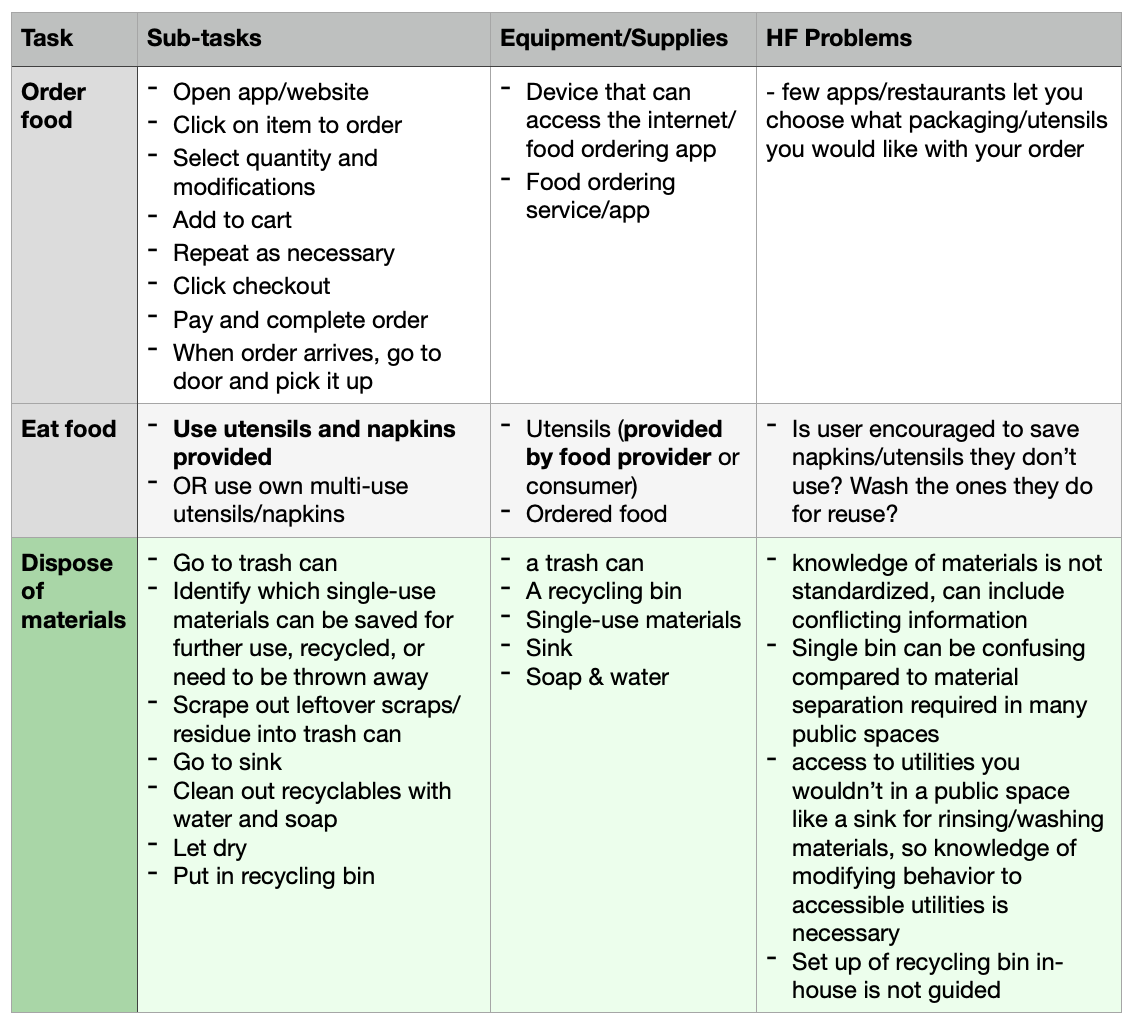
OBSERVATION & INTERVIEW
METHODS
The controlled independent variables were as follows:
1. Split-house apartment: no explicit instructions/policies from landlord
2. User characteristics: upperclassmen, university student
The visit was then split into two segments:
1. An observation of the user ordering takeout, eating, and disposing of
single-use products.
2. A short interview to learn about the user's background and level of
recycling knowledge.
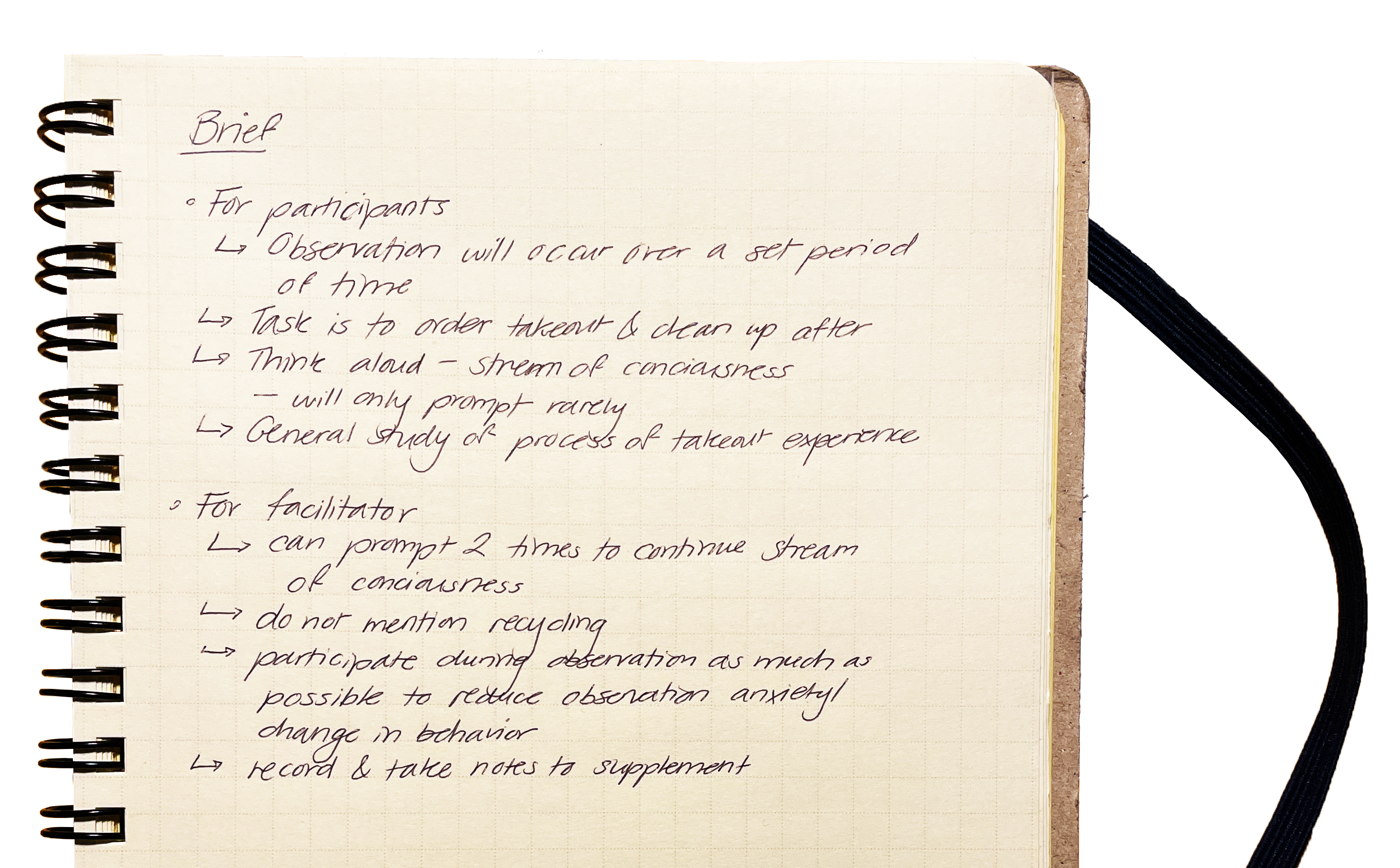
Interview/Observation #1
The first observation was of a 23 year old man who had lived in Pennsylvania his whole life. After observing and speaking with him about the source of his knowledge and his day, I came to the conclusion that timesharing and a high cognitive load had several effects on his ability to successfully recycle. His previous experience with recycling food packaging growing up had little overlap with the takeout packaging he recycles most often in college, so he generalized previous knowledge about the recycling symbols. His regional knowledge was also lacking, despite growing up in Pennsylvania and having a parent who was diligent with recycling growing up. This factor could be identified as an indicator of how willing he would be to recycle at any given moment as well based on his allowance to recall and make decisions about recycling. His doubt of whether State College practices extended to Pittsburgh was in question and caused hesitation, but he didn’t follow up on that hesitation by researching Pittsburgh recycling practices, he chose to instead rely on previous experience (the passive choice). Additionally, he noted that he has gotten the same packaging from the chosen restaurant as he had at other takeout locations, and he couldn’t remember what he had chosen to do with each piece previously.
Interview/Observation #2
The second person I observed was a 22 year old woman, who had moved to Pittsburgh for college and previously lived in Singapore. This participant had grown up in an area that fosters less public awareness of recycling than the US does. She generalized her knowledge from recycling in Singapore, and didn’t think to check whether there were differences in Pittsburgh (she referenced that she had never been told otherwise). She also mentioned that she orders food out about three times a week, and is usually in a location where she just disposes of all the pieces into the trash. At home, she recycles, but only if it’s very convenient, as she wants to get back to her schoolwork as soon as she can after eating. She also mentioned remembering that rules existed, but forgetting what they actually were- an interesting lapse in recall that could be attributed to cognitive overload when the rule was learned.
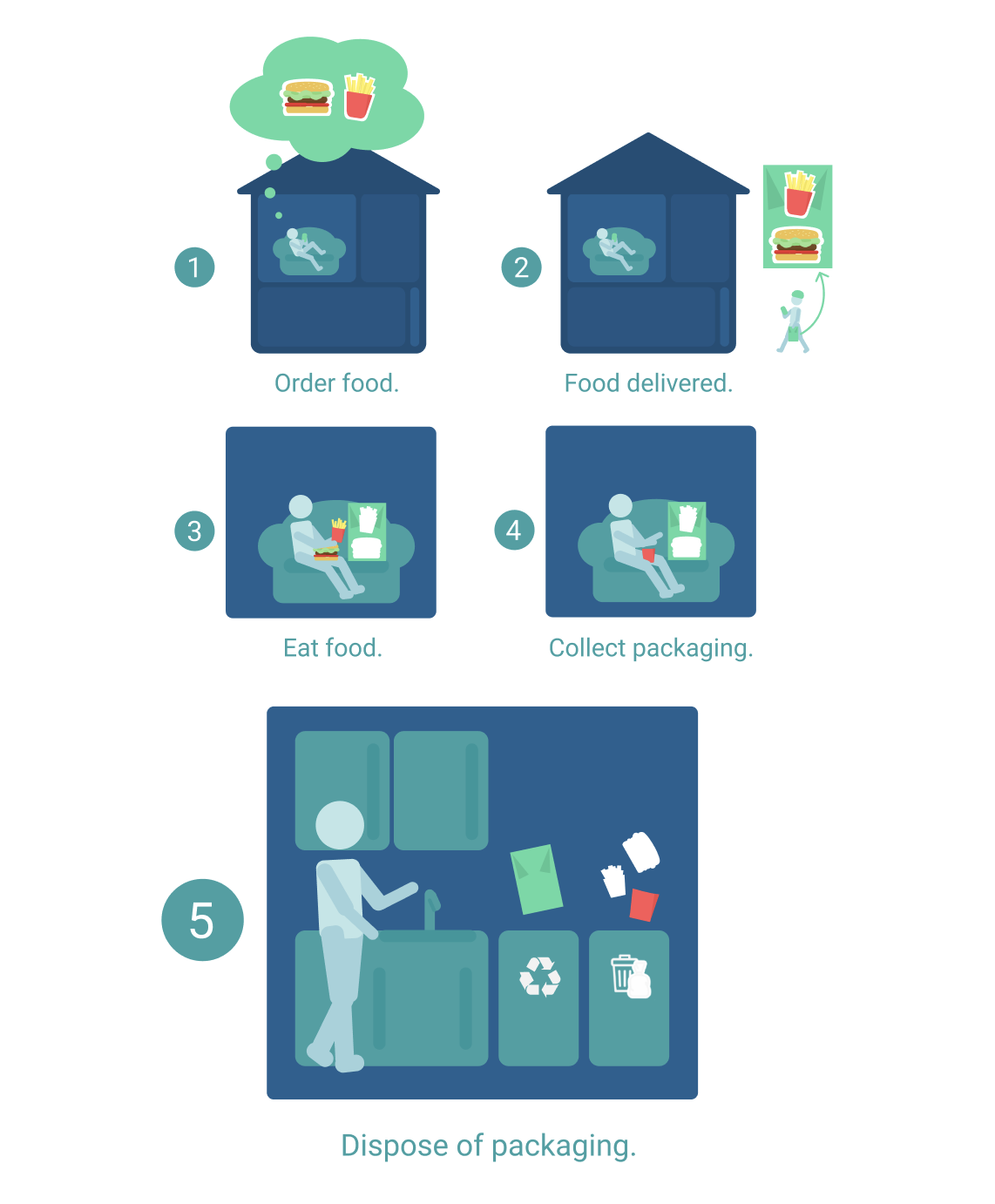
TAKEAWAYS
In summary, it was interesting to learn how little the users had thought about the factors that might be influencing their willingness to recycle, and when introduced to my solution about a week later, both expressed that they would appreciate more direct instruction on how to recycle the materials. Both stated they thought it would increase their ability and willingness to put the extra effort in if they were told exactly what they needed to do. Additionally, both noted that they are usually timesharing when cleaning up from dinner either by watching a tv show or listening to music or a podcast, or talking to their roommate- all of which make it more difficult for them to access their long term memory for recycling practices and habits.
SYNTHESIS OF QUALITATIVE DATA
Based on the steps outlined by the task analysis and user studies, I created a user journey map to synthesize my findings into a visual medium. I wanted to make the information digestable for sharing with stakeholders and leads, and to highlight the opportunities I had begun to discover for more exploration in the next phase of the project.
A few of the takeaways I had from this exercise are below:
- There are several moments of attention that could be harnessed if provided with easily accessible information.
- There are elements present in the situation outside of the packaging themselves that could be useful (receipt, person's phone)
FOCUS
Looking back on the founding questions for the project, I began to ideate scalable solutions to the problem at hand, as well as more systemic changes that could be made over a more extended period of time.
While re-visiting my primary questions:
How can we reach a population overinundated with daily instruction and information?
↬ provide moment-of information that doesn't require initiation steps
What solutions are general enough to apply to a diverse population and have a measurable impact?
↬ make use of elements of the existing system to reach as many people as possible
Preliminary Ideas:
↬ sticker on recyclable products
↬ recycling information addendum to order receipt
↬ QR code on receipt linked to informational website
(RE)DESIGN OF THE PROCESS
Currently, the person interacting with the recycling system has to go through a personal mental checklist and recall of information in order to successfully navigate recycling. After speaking with the interviewees and observing pain points throughout their process, I began to ideate ways to make the information they needed to recall easy to access and visualize. This would allow them to seek an existing tool rather than recalling detailed information from memory.
What elements are interacted with during a takeout meal?
↬ the bag: doesn't have any relationship to its contents other than volume
↬ the receipt: modifiable, always included, correlates to details of meal
↬ the single-use materials: one-to-one relationship
↬ the customer's phone: usually within vicinity, especially for delivery
Based on this basic investigation into possible avenues for exposing the recycling information to the customer, I went forward with further research into the labeling of the single-use materials themselves, the receipt, and the phone.
Other Work
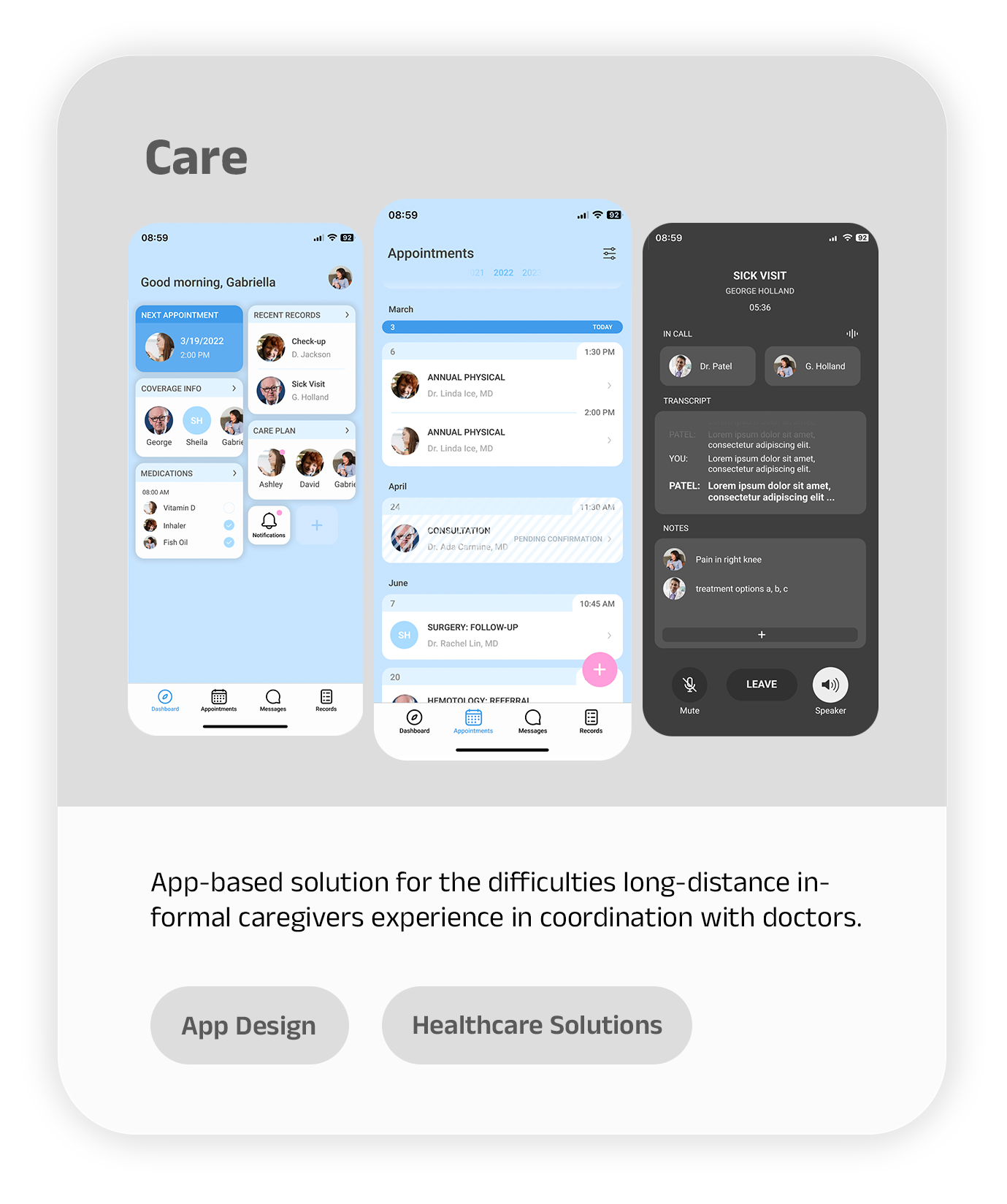
CareDesigned an application for caregivers and doctors to improve communication between the parties and thus the care of patients.
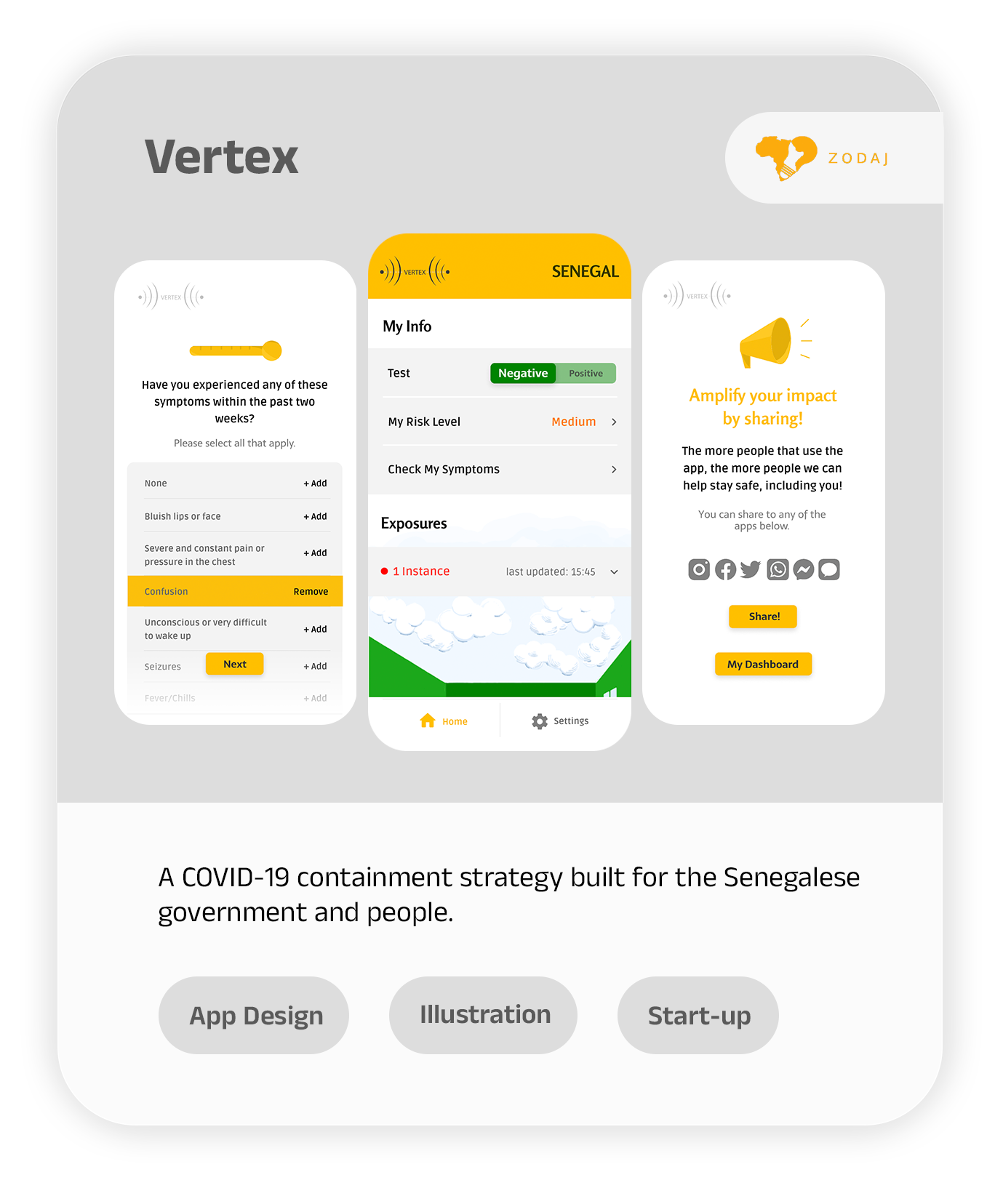
VertexLead UI designer for a mobile app for Senegal's COVID-19 response.
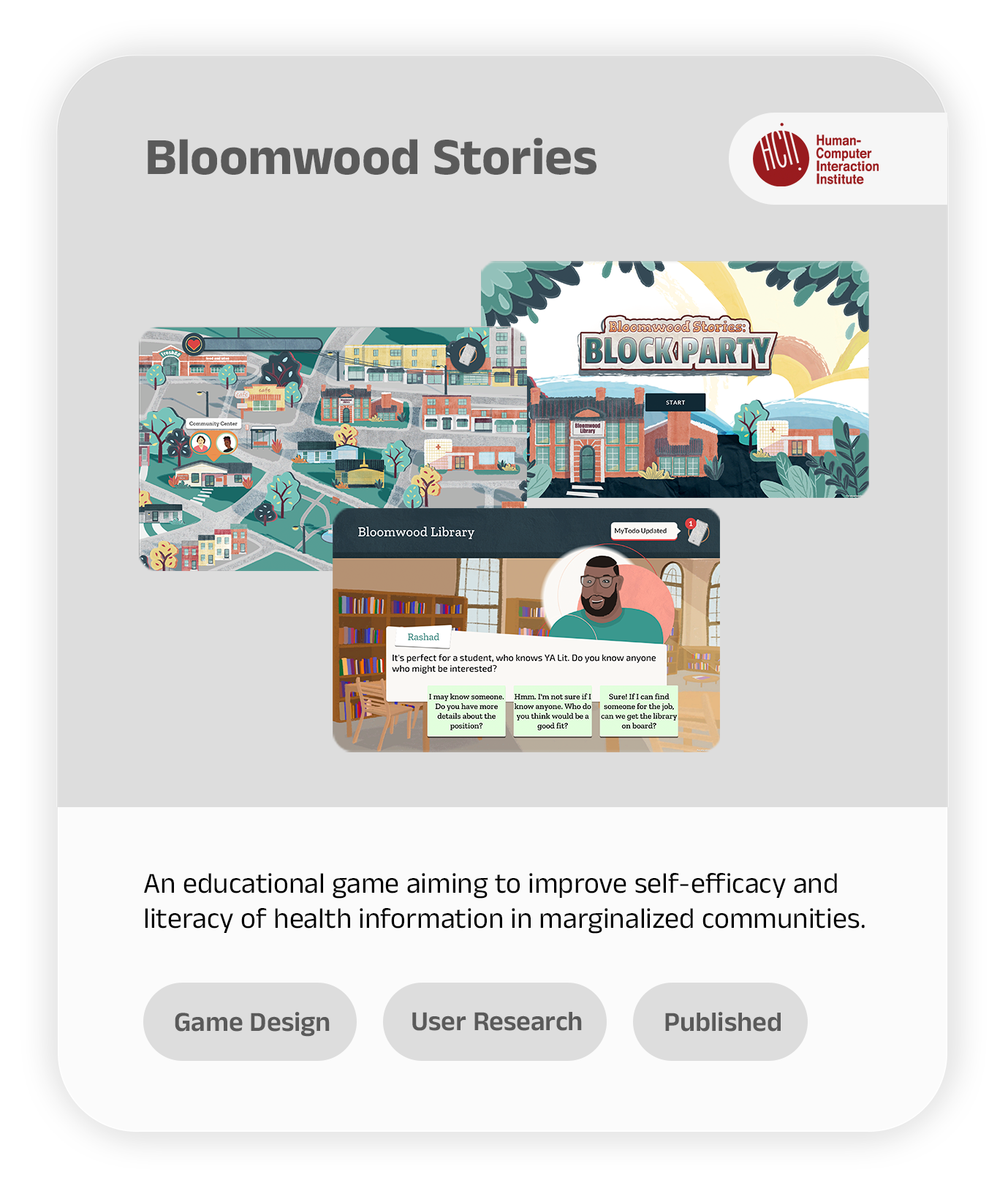
Bloomwood Stories: The Block PartyConducted long-term literature and user research to design a health-literacy game for underserved communities in the US.

